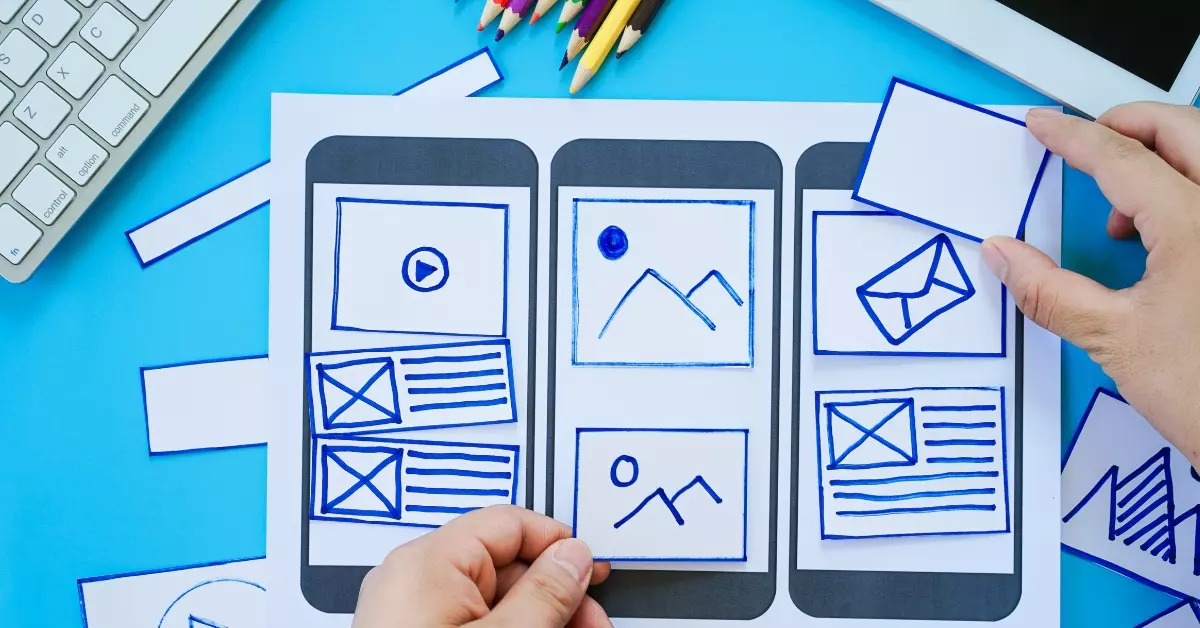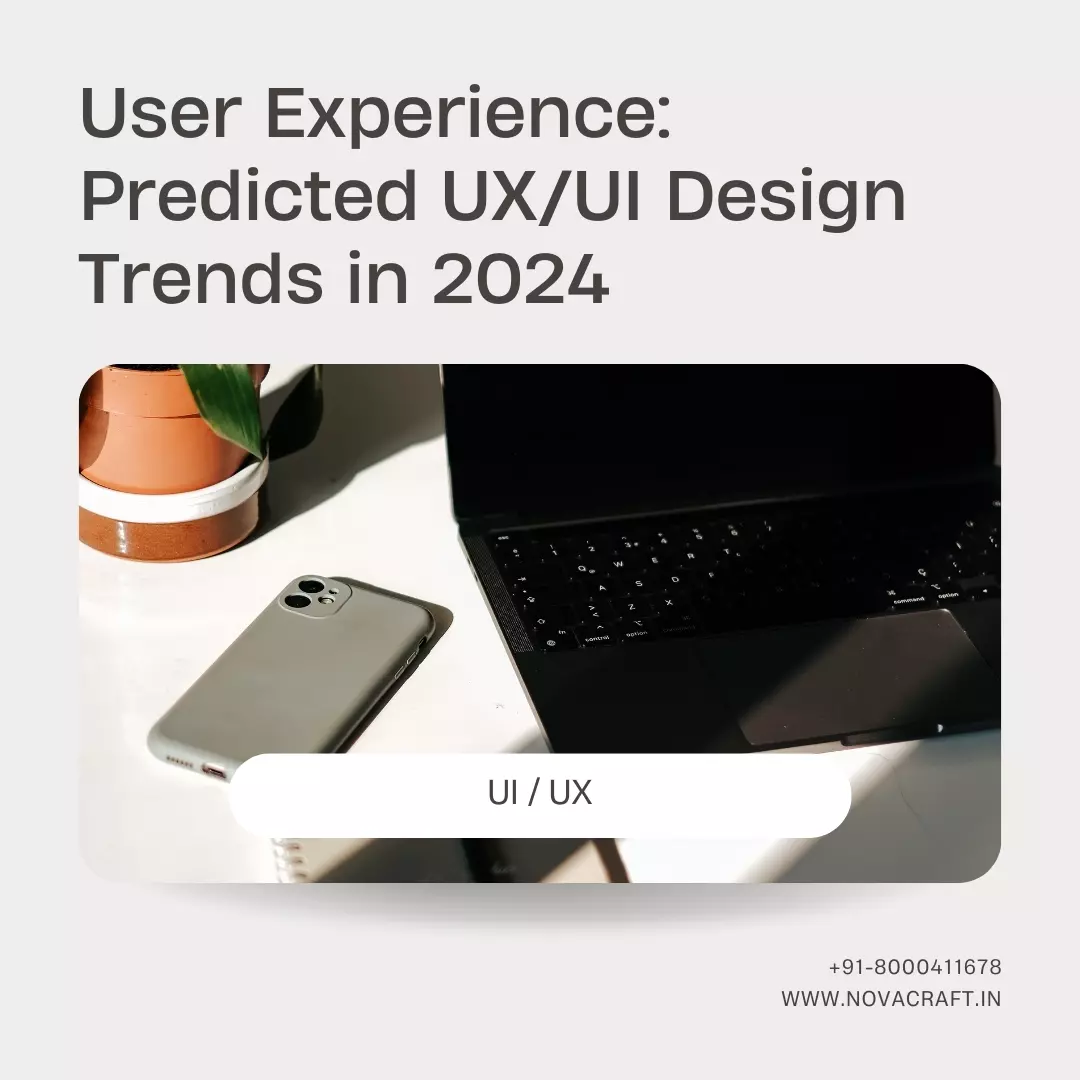Welcome to the future of user experience! In a rapidly evolving digital landscape, where technology reigns supreme, staying ahead of the curve is essential for businesses and designers alike. As we zoom into 2024, brace yourself for an exhilarating ride through predicted UX/UI design trends that are set to revolutionize how we interact with websites, apps, and virtual environments.
From immersive augmented reality experiences to personalized AI-driven interfaces, this blog post unveils the cutting-edge innovations that will reshape the way we navigate and engage with digital platforms. So fasten your seatbelts as we embark on a journey into the exciting world of UX/UI design in 2024!
Introduction to UX/UI Design and its Importance in the Digital Age
In today’s digital age, user experience (UX) and user interface (UI) design have become crucial elements in the success of any digital product or service. From websites to mobile applications, a well-designed UX/UI can make or break the overall user experience. In this section, we will introduce you to the concept of UX/UI design and discuss its importance in the ever-evolving digital landscape.
1.1 What is UX/UI Design?
UX/UI design is a process that involves creating intuitive and visually appealing digital interfaces that enhance the overall user experience. It combines principles from various fields such as psychology, graphic design, and human-computer interaction to create a seamless and enjoyable experience for users interacting with a product or service.
User Experience (UX) focuses on understanding the needs and behaviors of users while they interact with a digital product. It involves conducting research, creating personas, wireframes, and prototypes to ensure that the final interface meets the users’ expectations.
On the other hand, User Interface (UI) design deals with designing visual elements such as buttons, menus, icons, etc., that make up an interface. The goal of UI design is to create an aesthetically pleasing interface that provides easy navigation for users.
1.2 Why is UX/UI Design Important in Today’s Digital Landscape?
With technology advancing at an unprecedented pace, consumers’ expectations have also increased significantly when it comes to using digital products or services. A poor user experience can lead to frustration and dissatisfaction among users resulting in them.

Overview of Current UX/UI Design Trends
The world of UX/UI design is constantly evolving, with new trends and advancements emerging every year. In order to stay ahead in the industry, it is important for designers to keep up with these changes and incorporate them into their work. In this section, we will provide an overview of the current UX/UI design trends that are shaping the digital landscape.
1. Minimalism
Minimalism has been a popular trend in design for many years now, and it continues to dominate the UX/UI scene. This approach focuses on simplicity and clarity, using clean lines, white space, and limited color palettes to create a user-friendly interface. With minimalism, less is more – eliminating unnecessary elements allows for a more streamlined and efficient user experience.
2. Dark Mode
Dark mode has gained immense popularity in recent years, especially since it was introduced as a feature on major operating systems like iOS and Android. This trend involves using dark or black backgrounds instead of traditional light ones. Not only does this give users a break from bright screens, but it also adds a sleek and modern look to interfaces.
3. Microinteractions
Microinteractions are small animations or visual cues that occur when users interact with certain elements on a website or application. These interactions serve as feedback for users and make the overall experience more engaging and intuitive. They can be used for various purposes such as indicating loading times, confirming actions, or simply adding a touch of playfulness to the design.
The Impact of Technology Advancements on UX/UI Design
1. The Impact of Technology Advancements on UX/UI Design
In today’s digital age, technology is constantly evolving and advancing at a rapid pace. This has greatly influenced the way we interact with digital products and services, making user experience (UX) and user interface (UI) design more important than ever before.
With the rise of new technologies such as artificial intelligence, virtual reality, and voice assistants, the possibilities for enhancing UX/UI design are endless.
One of the biggest impacts of technology advancements on UX/UI design is the shift towards creating more personalized and seamless experiences for users.
With data analytics and machine learning capabilities, designers can now gather insights about their target audience’s preferences, behaviors, and needs in order to create tailored experiences that meet their individual needs. This not only improves overall satisfaction but also increases engagement and conversion rates.
Another significant impact is the integration of emerging technologies into UI design. Virtual reality (VR) has opened up a whole new dimension for designers to explore by creating immersive experiences that bring products or services to life.
Augmented reality (AR), on the other hand, allows designers to overlay digital elements onto real-world environments, creating interactive experiences that blur the line between physical and digital worlds.
The use of artificial intelligence (AI) has also revolutionized UX/UI design by automating repetitive tasks and providing intelligent recommendations based on user behavior. Chatbots powered by AI have become increasingly popular in customer service applications as they provide quick responses while mimicking human interactions, resulting in a seamless.
Predicted UX/UI Design Trends for 2024
As technology continues to advance at a rapid pace, the world of UX/UI design is constantly evolving. Designers are always on the lookout for new trends and techniques that will enhance the user experience and create innovative interfaces. With 2024 just around the corner, it’s time to start predicting what UX/UI design trends will dominate in the near future.
1. Augmented Reality (AR) and Virtual Reality (VR)
With the rise of AR and VR technologies, we can expect to see these immersive experiences becoming more integrated into UX/UI designs.
These technologies have already been successfully used in gaming and entertainment industries but are now being explored for their potential in enhancing user experiences on websites and mobile apps. Imagine being able to virtually try on clothes or experience a product before making a purchase – this level of interaction will soon become commonplace thanks to AR/VR.
2. Voice User Interfaces (VUIs)
The use of voice commands has exploded in recent years with devices like Amazon Alexa and Google Home becoming household names. In 2024, VUIs will likely be incorporated into more websites and applications, allowing users to interact with technology using just their voice. This trend not only adds convenience for users but also opens up accessibility options for those with disabilities.
3. Personalization through Artificial Intelligence (AI)
In today’s digital age, personalization is key when it comes to user experience. AI algorithms can analyze vast amounts of data about a user’s behavior, preferences, and interests to deliver personalized content.
Personalization and Customization in UX/UI Design
1. – Personalization and Customization in UX/UI Design
Personalization and customization have become buzzwords in the world of user experience (UX) and user interface (UI) design. With the increasing demand for personalized experiences, designers are constantly exploring ways to create unique and tailored experiences for users. In this section, we will delve deeper into the concept of personalization and customization in UX/UI design, its importance, and how it is predicted to revolutionize the industry.
What is Personalization?
Personalization refers to the process of tailoring an experience or product to meet individual needs and preferences. In today’s digital age, where consumers are bombarded with a plethora of choices, personalization has become a crucial aspect of creating a successful product or service.
In UX/UI design, personalization involves understanding user behaviors, needs, and preferences through data analysis techniques such as user research, surveys, and analytics tools. This information is then used to create personalized interfaces that cater specifically to each user’s unique requirements.
Why is Personalization Important in UX/UI Design?
Personalized experiences can greatly enhance the overall usability and satisfaction of a product or service for users. When users feel that an interface has been designed specifically for them, it creates a sense of connection between them and the brand or product. This leads to better engagement levels and increased customer loyalty.
Moreover, personalizing interfaces also helps in delivering relevant content or features to users based on their interests. This not only improves their overall experience but also increases.
Advanced Data Analytics and Machine Learning Integration
The integration of advanced data analytics and machine learning has revolutionized the field of user experience (UX) and user interface (UI) design in recent years. With the abundance of data available and the advancements in technology, designers are now able to gather insights from user behavior, preferences, and interactions to create highly personalized and intuitive experiences.
In this section, we will delve deeper into how the integration of advanced data analytics and machine learning is transforming UX/UI design by predicting some key trends that are expected to shape the industry in the upcoming years.
1. Personalization at Scale:
Personalization has been a buzzword in UX/UI design for quite some time now. However, with the help of advanced data analytics and machine learning algorithms, personalization can now be achieved at a much larger scale. These technologies allow designers to analyze vast amounts of data on user behavior, demographics, preferences, etc., to create highly tailored experiences for each individual user.
For instance, e-commerce websites can use machine learning algorithms to recommend products based on a customer’s browsing history or purchase patterns. This not only enhances their shopping experience but also increases their chances of making a purchase.
2. Predictive Design:
Another significant trend that is emerging due to the integration of advanced data analytics and machine learning is predictive design. This involves using predictive models to anticipate users’ needs and provide them with relevant content or features before they even realize it themselves.
Minimalism in Design: Less is More
Minimalism in design is a trend that has been gaining popularity in recent years, especially in the world of user experience and user interface (UX/UI) design. It is a concept that focuses on simplicity and functionality, emphasizing the idea that less is more when it comes to creating effective designs.
The core principle of minimalism is to eliminate any unnecessary elements and distractions from the design, allowing the focus to be on the essential elements and features. This results in a clean and clutter-free design that not only looks aesthetically pleasing but also improves the overall user experience.
One of the main reasons for the rise of minimalism in UX/UI design is its ability to enhance usability. By removing any unnecessary elements, designers can create interfaces that are easy to navigate and understand. This, in turn, leads to an improved user experience as users can quickly find what they are looking for without being overwhelmed by excessive information or visual clutter.
Another benefit of minimalism in design is its ability to improve loading times. With fewer elements on a page, there is less data for devices to load, resulting in faster loading times. This is particularly important for mobile users who may have limited data plans or slower internet connections.
In addition to improving usability and loading times, minimalism also allows for better scalability across different devices and screen sizes. With more people accessing websites through their smartphones or tablets, it has become crucial for designers to create responsive designs that adapt seamlessly across various devices.


